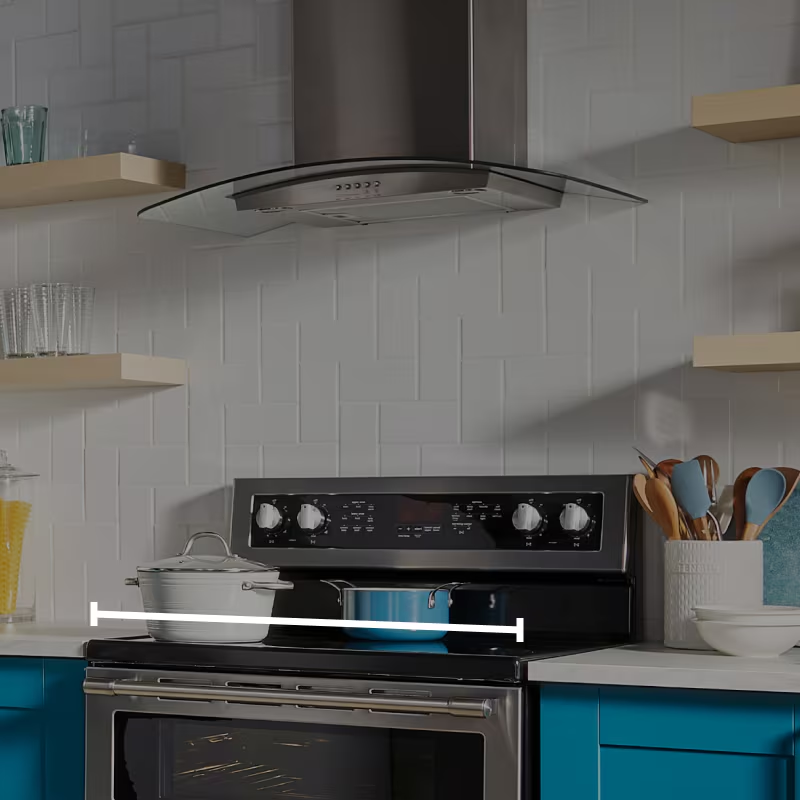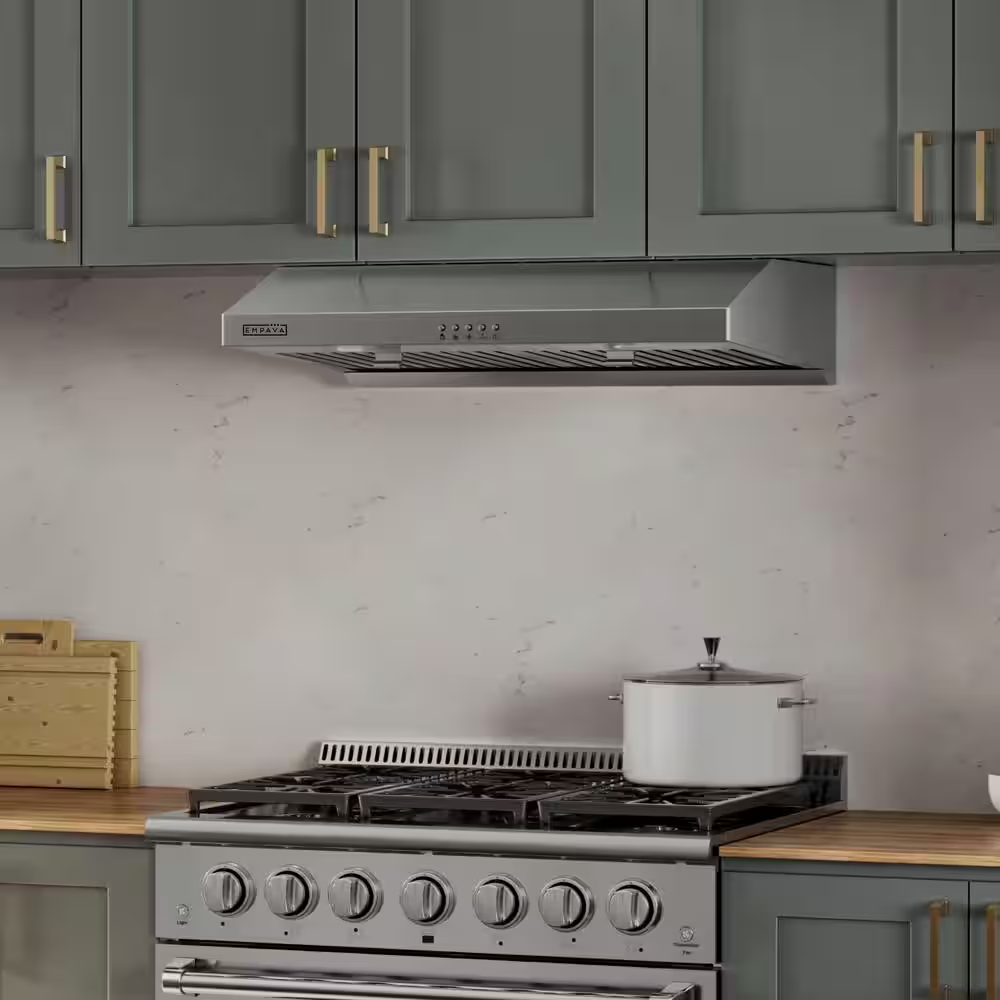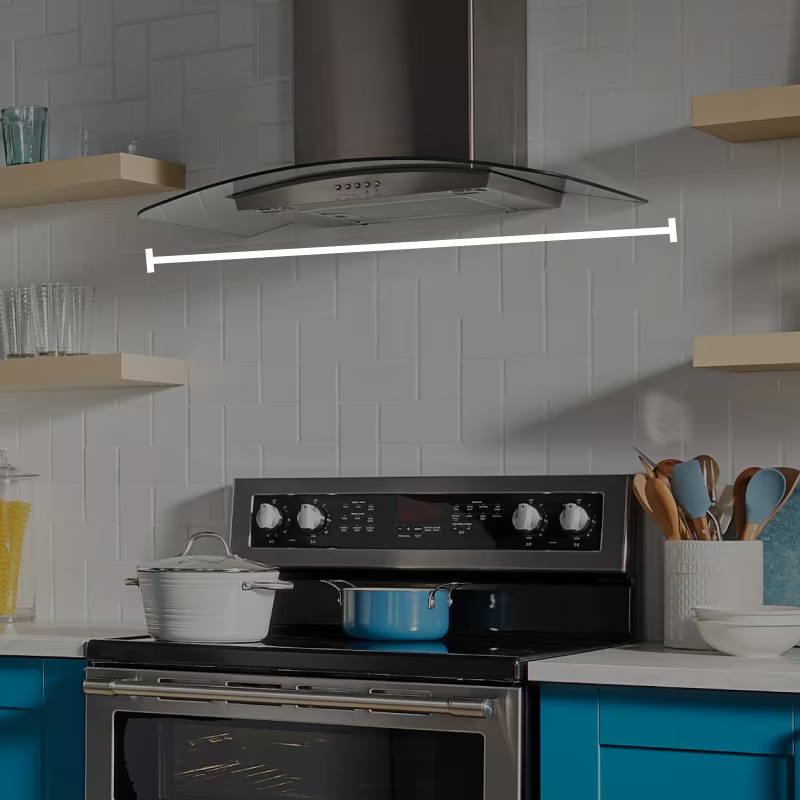In modern kitchens, the range hood plays a pivotal role in maintaining air quality by efficiently extracting smoke, steam, odors, and grease during cooking. When it comes to electric stoves, determining the ideal height for your range hood becomes crucial for both functional and aesthetic reasons. Striking the perfect balance ensures maximum ventilation efficiency while complementing your kitchen’s design. This comprehensive guide delves into the key factors to consider when installing a range hood above an electric stove, focusing on ventilation performance, design integration, and safety standards.
Understanding Ventilation Requirements
The primary function of a range hood is to capture and expel contaminants generated during cooking. For electric stoves, which produce less open flame and generally less intense heat compared to gas stoves, the hood’s positioning still needs to adhere to industry guidelines. The National Kitchen & Bath Association (NKBA) recommends installing a range hood 30 to 36 inches above the cooktop for optimal capture efficiency. This distance allows the hood to effectively draw in steam and odors without interfering with cooking activities.

Aesthetic Integration
In contemporary kitchens, aesthetics often go hand-in-hand with functionality. The height of your range hood should blend seamlessly with the surrounding cabinetry and overall kitchen design. If you have a cabinet-mounted hood, ensure it aligns perfectly with the bottom of the upper cabinets for a cohesive look. Alternatively, island-mounted hoods offer more flexibility but should still respect the recommended height guidelines to maintain visual harmony.
Safety Considerations
Safety is paramount in any kitchen setup. Positioning the range hood at the correct height minimizes the risk of fire hazards by effectively removing combustible materials like grease particles from the air. Additionally, ensuring there’s enough clearance between the cooking surface and the hood prevents accidental contact with hot surfaces or spillage onto electrical components.

Noise Management
Range hoods can generate varying levels of noise depending on their operation. While height does not directly control noise output, a well-positioned hood can help mitigate noise perception. Higher hoods might slightly reduce noise at the cooking area due to increased distance, but this should not compromise ventilation effectiveness.
Cleaning and Maintenance
Ease of cleaning is another factor influenced by the hood’s height. A hood that is too low may hinder cleaning tasks around the cooktop, whereas one that is too high may accumulate more grease and dust over time. Finding the sweet spot simplifies regular maintenance and prolongs the hood’s lifespan.

Choosing the Right Type of Hood
The type of range hood you choose also impacts the ideal installation height. Ducted hoods, which vent outside, generally perform better when installed closer to the cooking surface. Ductless hoods with charcoal filters, however, may have different requirements due to their filtration method.
Lighting and Visibility
Another aspect often overlooked is the impact of range hood height above stove on lighting and visibility during cooking. Many range hoods come equipped with built-in lighting to illuminate the cooktop area. Installing the hood at the optimal height ensures this lighting is adequately positioned to minimize shadows and glare, enhancing visibility and making cooking tasks safer and more enjoyable.

Future-Proofing Your Kitchen
Lastly, when deciding on the range hood height, think about the future adaptability of your kitchen. If you anticipate changes in your cooking habits or a potential switch to a different cooktop type in the future, choosing a flexible installation that can accommodate various heights or hood types can save you renovation costs down the line.
Incorporating adjustable mounting hardware or预留 space for potential upgrades can make your kitchen more versatile without sacrificing current performance or style. This foresight can be particularly beneficial in new constructions or major kitchen remodels where long-term planning is essential.
Energy Efficiency and Cost Considerations
When discussing the optimal range hood height, it’s also important to consider energy efficiency and potential cost savings. Properly positioned range hoods can contribute to a more energy-efficient kitchen by effectively ventilating hot air and reducing the workload on cooling systems, especially in warmer climates or during summer months.
A hood that is too close to the cooktop might need to work harder to pull the same volume of air, consuming more energy in the process. Conversely, if the hood is installed too high, it may not efficiently capture rising steam and heat, necessitating longer operation times to achieve the desired ventilation effect, again impacting energy consumption.
Moreover, investing in a range hood with adjustable fan speeds can further enhance efficiency. Lower speeds can be used for light cooking, conserving energy, while higher speeds can tackle heavy-duty tasks like frying or boiling. The correct height ensures these settings can be used effectively without compromising kitchen air quality.

Lighting and Visibility
Another aspect often overlooked is the impact of range hood height on lighting and visibility during cooking. Many range hoods come equipped with built-in lighting to illuminate the cooktop area. Installing the hood at the optimal height ensures this lighting is adequately positioned to minimize shadows and glare, enhancing visibility and making cooking tasks safer and more enjoyable.
Future-Proofing Your Kitchen
Lastly, when deciding on the range hood height, think about the future adaptability of your kitchen. If you anticipate changes in your cooking habits or a potential switch to a different cooktop type in the future, choosing a flexible installation that can accommodate various heights or hood types can save you renovation costs down the line.
Incorporating adjustable mounting hardware or预留 space for potential upgrades can make your kitchen more versatile without sacrificing current performance or style. This foresight can be particularly beneficial in new constructions or major kitchen remodels where long-term planning is essential.
Exploring alternative ventilation technologies
Besides traditional exhaust fans, there are a number of alternative ventilation technologies that can improve indoor air quality and energy efficiency:
Heat Recovery Ventilation (HRV):
- HRVs are mechanical ventilation systems that extract stale indoor air and exchange it with fresh outdoor air.
- The key advantage of HRVs is that they capture heat (or coolth) from the outgoing air stream and transfer it to the incoming fresh air, reducing energy consumption for heating or cooling.
- HRVs work best in well-sealed homes as they rely on a pressure differential to function effectively.
Energy Recovery Ventilation (ERV):
- ERVs are similar to HRVs but also transfer moisture along with heat.
- This can be beneficial in dry climates to prevent excessively dry indoor air during winter months.
- However, ERVs might not be suitable for humid climates where excess moisture can lead to mold growth.
Whole House Fans:
- Whole house fans are a cost-effective option for cooling homes in temperate climates.
- They work by pulling cooler outdoor air in at night and exhausting hot indoor air through attic vents.
- Whole house fans are most effective when used in conjunction with open windows to create a cross-ventilation flow.
- Keep in mind that they won’t be effective in hot and humid climates.
Natural Ventilation:
- This is the simplest and most energy-efficient ventilation strategy.
- It involves opening windows and doors to allow for fresh air exchange.
- However, natural ventilation can be impractical in extreme weather conditions or high-pollution areas.
Stack Ventilation:
- This technique uses natural buoyancy to remove hot, stale air from a building.
- A tall vertical shaft is constructed that draws warm air upwards and out of the building, while cooler air is drawn in from below.
- Stack ventilation can be effective in buildings with high ceilings or atriums.
Other Innovative Technologies:
- Downdraft cooktop ventilation: These systems integrate the exhaust directly into the cooktop, effectively capturing fumes and pollutants at the source.
- Air purification systems: Standalone air purifiers can help remove allergens, dust, and pollutants from indoor air, but they don’t provide fresh air exchange.
The best ventilation technology for you will depend on your specific needs, climate, and budget. Consider consulting with a qualified HVAC professional to determine the most suitable solution for your situation.
Innovations in adjustable hood systems
The ideal hood height above range your range depends on several factors, including the type of cooktop you have and the power of your range hood. However, there are innovations in adjustable hood systems that can offer more flexibility and convenience.
Current Adjustable Hood Systems
There aren’t many adjustable hood systems on the market yet, but some concepts have been patented and might be available soon. Here’s one example:
- Push-lever adjustment: This system would allow you to adjust the height of your range hood with a simple push or pull of a lever, even after it’s been installed. This is a significant improvement over traditional hoods, which require loosening screws or bolts to make any adjustments.
Innovations on the Horizon
Here are some ideas that companies are exploring for future adjustable hood systems:
- Smart hoods with automatic height adjustment: These hoods could use sensors to detect the heat level from your cooktop and automatically adjust the height for optimal capture.
- Voice-controlled height adjustment: Imagine simply telling your voice assistant to raise or lower your hood depending on what you’re cooking.
These innovations are still in the works, but they show the potential for more user-friendly and efficient range hood systems in the future.
In the meantime, most range hoods are not adjustable. The recommended height for a range hood is typically between 28 and 36 inches above your cooktop. Gas ranges typically need the hood to be closer (28-30 inches) due to the higher heat output, while electric ranges can have the hood placed slightly higher (30-36 inches).
Achieving the optimal range hood height above electric stove an electric stove is a blend of science and art. It involves understanding ventilation principles, considering the kitchen’s aesthetic appeal, ensuring safety, managing noise, facilitating ease of cleaning, and selecting the right hood type. By adhering to professional guidelines and personal preferences, you can create a kitchen environment that is both functional and visually pleasing. Remember, consulting with a professional installer or the manufacturer’s instructions can provide tailored advice for your specific kitchen configuration, leading to a more efficient and enjoyable cooking experience.


